STAGE LIGHTING — EVERYTHING YOU NEED TO KNOW
Stage lighting fixtures is an artwork form. It’s used to light up a overall performance venue and make an effect on an event, giving visible path and shaping the environment. From stage lighting fixtures setup to set up and kinds of systems, this post will offer the principles of degree lighting fixtures which are beneficial for absolutely everyone in the stay performance area.
WHAT’S THE GOAL OF STAGE LIGHTING?
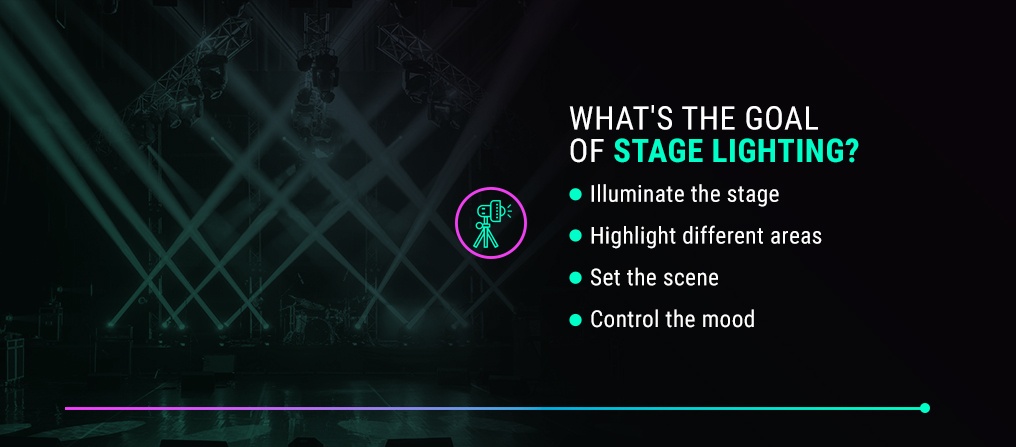
The intention of stage lights isn’t restrained to one goal. Stage lighting fixtures permit you to seize the target market’s attention and beautify a degree manufacturing in some of approaches. The proper degree lights can:
- Illuminate the stage: The maximum primary goal for level lighting fixtures is to light up the performers, units and props so the target audience can really see everything they’re meant to peer onstage. Inadequate lighting can eliminate from a manufacturing. For instance, dim light will make it more difficult for actors’ facial expressions to return through — even to audience individuals seated near the stage. Illumination is likewise crucial for the humans onstage, so they can see wherein they’re going and see the opposite dancers, actors or musicians.
- Highlight unique regions: Stage lighting can also assist you direct target market participants’ eyes where they have to go. In the maximum dramatic times, the bulk of a stage may be dark with simply one highlight shining on a focus. In many different times, the lighting fixtures engineer can start with a wash, which covers a wide place and acts as a base layer of mild. Then, they can use accenting to guide the target audience’s interest to a particular location, like a speaker in the foreground.
- Set the scene: Lighting can also help you create the visible you want in a scene. In a few instances, this means creating optical illusions with lights. You may additionally use a shifting light to make it seem as although the solar is rising, or make the stage cross darkish as an actor flips a prop light transfer in a room. You also can use backlit scrims to create the illusion of a starry night, a sunny day or even a hearth.
- Control the temper: Stage lighting can also have a main effect on the temper. The idea is to in shape the lighting fixtures to the content material of the show to encourage the proper emotions inside the audience. This should mean a gentle, heat glow for a happy scene in a play or dim, cool colorations for a unhappy ballad all through a live performance. Certain hues are associated with different moods. For example, blue is frequently related to sadness, and crimson is related to intense emotions, like love or aggression.
STAGE LIGHTING TERMINOLOGY
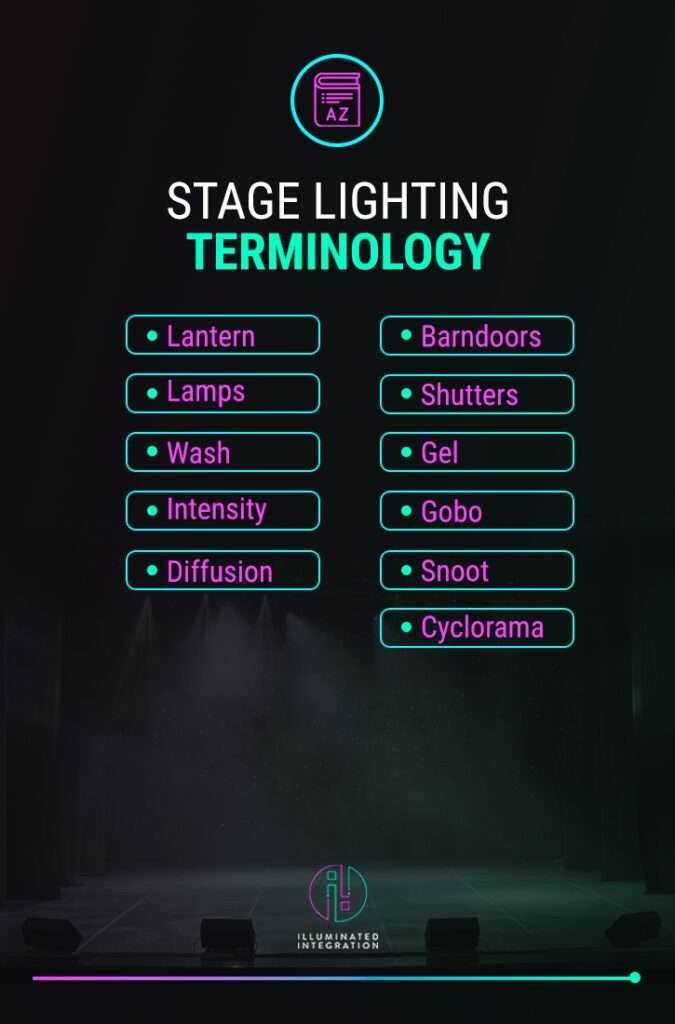
To better apprehend the topic of stage lighting, it facilitates to get yourself up to speed with a few stage lights names for objects and ideas that typically come up in this discipline:
- Lantern: Though you could truly listen them called lighting or lighting, the lighting fixtures devices or stage lighting fixtures are also normally known as lanterns. In Europe, the greater not unusual term is luminaire.
- Lamps: Lamp is the proper time period for what you could name a mild bulb in a domestic lighting fixtures context. In stage lights, the bulbs that move into light furnishings are continually referred to as lamps.
- Wash: A wash, also called a fill, is a huge swath of lights that provides constant coverage throughout a stage. Floodlights are normally used to create a wash.
- Intensity: Intensity is the time period lighting fixtures professionals use to explain a degree mild’s stage of brightness. A more extreme light will draw greater electrical power. Decreasing the electric deliver reasons the mild to end up dimmer, or decrease in depth.
- Diffusion: Diffusion is the process of dispersing light to soften it. A subtle light is the opposite of an severe beam with tough edges. Lighting engineers can use diffusion fabric, which is sort of a colorless gel, to soften the light.
- Barndoors: Barndoors are units of either or 4 steel flaps that affix to the the front of a level light to solid a extensive, smooth beam of light. The barndoors shape the mild and create a harder area in which the light stops so the beam gained’t light up areas you will prefer to stay darkish.
- Shutters: Shutters are similar to barndoors, however they are constructed into ellipsoidal lighting. By transferring the shutters, you could manipulate the shape of the light and block positive regions.
- Gel: A gel, also referred to as a shade filter, is what lights professionals use to change the shade of a beam of light. Gels encompass clean sheets with a translucent colored sheet of plastic in the center. By sliding distinct gels into the shade frame on a light, you can use the same light to forged many exclusive colours.
- Gobo: A gobo, also referred to as a sample, is a skinny steel disc with a sample reduce out, like a stencil. By setting the gobo in a holder in the front of a light supply, the light will cast a pattern on the stage. This pattern could create an photograph, like a city skyline, or it may genuinely add a few texture to the light.
- Snoot: A snoot, additionally nicknamed a pinnacle hat after its look, is an opaque, cylindrical accessory you can region over a mild to lessen flare or stray light that can come from lights.
- Cyclorama: A cyclorama, or a “cyc” for short, is a big cloth backdrop used on a level. It’s normally concave, stretching in an arc from one facet of the stage to the other. You can use lights device to undertaking light or images onto the cyclorama.
TYPES OF STAGE LIGHTING FIXTURES
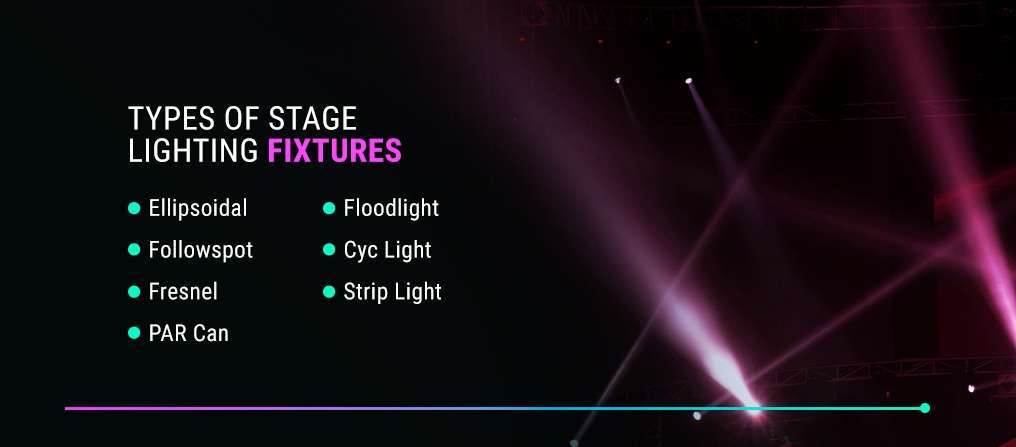
There are numerous forms of level lights which are commonplace in stage lighting layout. Each kind is designed for a completely unique reason, so maximum stage lighting fixtures setups will encompass more than one forms of stage lights device or lanterns. These fixtures might also consist of:
1. Ellipsoidal
An ellipsoidal reflector highlight produces an intense, nicely-described beam of mild that is perfect for front lights. You can adjust the focus with tender or sharp edges, use shutters to alter the form of the lights and keep the light from bleeding into regions you want to stay dark. These lighting fixtures also can hold gobos and gels so you can create styles and shades with them.
2. Followspot
A followspot is a kind of highlight, so it casts an excessive, focused beam of light to give greater cognizance to a performer moving around onstage. These lights are mainly useful when you aren’t certain what course a performer will take and need to reply in real time considering that they’re traditionally operated manually. In addition to adjusting the positioning of the followspot, the operator also can regulate the scale and the intensity degree of the beam, and they are able to without difficulty alter the shade with integrated panels.
3. Fresnel
These lights are named after their inventor, Augustin Fresnel. What makes these lighting fixtures unique is that they’ve a lens made of concentric jewelry. The mild is brightest on the center ring and softens the nearer it gets to the edges. These lighting are an awesome preference for washes, even though they can also produce greater slender beams of mild with a tender part. You can not use shutters or patterns on these lighting fixtures.
4. PAR Can
A parabolic aluminized reflector (PAR) can is a staple in level lights. PAR cans are sealed-beam lamps in cylindrical steel casings. These lighting fixtures are similar to vehicle headlights and are simplistic of their layout. They don’t come up with precision with consciousness or zoom alternatives, but you may adjust them to create horizontal or vertical beams. You can choose from general and LED alternatives and might use gels to create colored lighting.
5. Floodlight
A floodlight is a huge fixture that an operator can circulate horizontally or tilt vertically. They don’t have any lenses, so floodlights are decided completely via the reflector and lamp kind. In symmetrical floodlights, light is sent similarly above and under the horizontal axis of the lamp. In asymmetrical floodlights, the mild spreads a lot in addition in one direction than the opposite inside the horizontal axis. Like PAR cans, floodlights can not guide patterns, beam adjustments or other accessories besides shade gels and diffusion.
6. Cyc Light
Remember that a “cyc” is a big fabric backdrop. Accordingly, a cyc mild is an open-faced fixture that offers a fair wash of light over a cyc or any other kind of vertical floor. These lighting can be placed at the ground or hung near the backdrop so we can successfully cover the backdrop in a sheet of mild.
7. Strip Light
Strip lights also can be used as cyc lights, but those lights are wider than maximum cyc lights. They include multiple lamps organized in a horizontal row. A strip mild is what many lighting fixtures engineers use to feature a massive quantity of shade coverage to a level. They can also let you blend shades. These lighting are available in each widespread and LED sorts.
LIGHTING POSITIONS
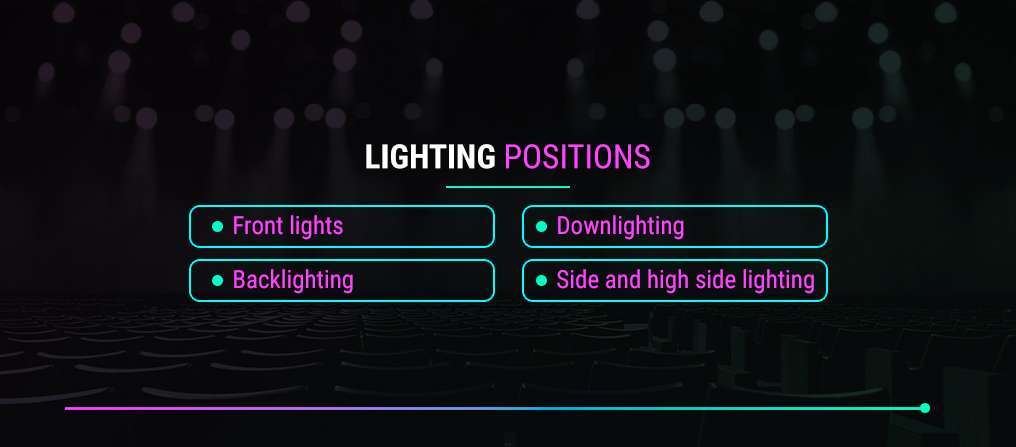
One of the foundational degree lighting concepts to recognize is lighting fixtures positions. The primary level lighting positions that lighting designers factor into their designs include:
- Front lighting: Front lighting fixtures are the number one source of lighting for a overall performance. In many situations, you’ll use front lighting to offer a wash for the whole level. Fixtures that factor forward towards performers’ faces are an essential place to begin, but by themselves, they’ll make a performer seem flat.
- Backlighting: To give a extra dimensional look in which the actor pops from the historical past, you also need backlighting and downlighting. Backlights are placed closer to the again of the stage, at the back of the performers. You can position backlights at different factors vertically. PAR can furnishings paintings specially properly for backlighting. You can trade the colour and depth to personalize the appearance.
- Downlighting: Another manner to add size to stage lights is with downlighting. Downlighting can vary in intensity. Note that a few designers use the term “downlighting” to mean lights that are positioned on the toes and cast light upwards, and others use the term to mean lighting which can be located above the level and shine immediately down or down at an perspective.
- Side and high facet lighting fixtures: You also want lighting fixtures positioned at the horizontal edges of the degree to illuminate performers from both facet. High facet lighting refers particularly to side lighting fixtures that is positioned excessive so it shines on performers’ heads and shoulders. These lighting are vital for making actors’ facial expressions actually visible.
LIGHTING COLORS AND TEXTURES
With the equipment of shade and texture at their disposal, lighting designers can closely influence the visuals and environment of a manufacturing. As we’ve visible, gels allow lighting technicians to exchange the coloration of lighting. They may even layer or combine gels to create coloration versions. In the usage of unique coloured lights to illuminate a scene, lighting fixtures designers may additionally take such a processes:
- Monochromatic: A monochromatic color scheme is constrained to one of a kind shades of the identical shade. This is a great choice while you want to preserve the lights simple or emphasize one shade.
- Complementary: Complementary shades are contrary of every other on the coloration wheel. Pairing these opposites together is a superb manner to create assessment. For instance, you could pair blue and yellow or purple and green. You shouldn’t layer complementary colors because they may create muddy colours.
- Triads: Lighting designers can use three exclusive colors in a scene for more visual variety. When these colorations create a triangle at the shade wheel, the color scheme is known as a triad. For example, you could integrate purple, inexperienced and blue or cyan, magenta and yellow.
- Adjacent colorings: By pairing adjoining shades — this is, colours subsequent to each different at the colour wheel — a lights designer can create a dwindled look from one shade to the following.
- Cool or warm colorings: You also can invoke a sure mood and shade subject matter by using combining colors of the same temperature. For example, combining pink, orange and yellow can make the scene experience warm.
Colored lighting fixtures can make contributions to the overall sense of a scene, however that’s not all. Changes inside the lighting’s coloration scheme can also act symbolically and be associated with sure issues or characters in a show. For example, a lighting fixtures dressmaker for a production of “Swan Lake” cited in an interview that, while the display’s color palette is often white, the lighting incorporates a bit of blue whilst the Swan is onstage.
Texture is another essential manner lighting designers can immediately impact the visuals in a scene. By using gobos with patterns on them, lighting fixtures designers can transform the look of a scene. Even in productions where sets are minimal, the right lighting pattern can create the influence that the performers are in a jungle, inside the city, outdoor on a starry night time or in a church with a stained glass window.
DIVIDING THE STAGE
At this factor, you may be questioning how lighting designers plan the lighting for a level production. This is an concerned manner that begins with analyzing the script and extends all the manner to the live overall performance. After familiarizing themselves with the manufacturing — in phrases of the characters, plot and the set with a purpose to be onstage — a lighting dressmaker can begin to broaden a plan.
This plan will begin with dividing the degree into regions that require independent lights manipulate. For productions that use the whole stage for maximum scenes, the lights designer will designate general segments which can be evenly divided across the degree. The only instance might be a center phase with a side segment on degree left and stage right.
For productions with greater segmented units and scenes that take location at different elements of the level, there will be more definitive, natural vicinity designations for the lighting dressmaker initially. For example, there can be a spot on the stage where a narrator seems periodically to talk or wherein a soloist will stand to perform during an orchestra concert. You could need this spot to be its very own location.
The way a clothier designates areas will totally depend on the manufacturing and the set, so there is no person-length-suits-all technique. Each new production a lighting dressmaker works on should start from the floor up.
After the clothier divides the stage by means of vicinity, they will reflect onconsideration on each location in terms of coloration. Do certain regions need to have their own controllable versions in color? In some instances, you will be capable of group adjacent segments at the level. Or you can want every phase to have its own coloration controls.
In the early stages in their layout, lighting experts generally tend to suppose typically about shade in terms of heat, cool and neutral lights. They can also start to assume greater mainly about person colorings if they recognize their colorings will vary decidedly from region to area at the stage.
HANGING LIGHT FIXTURES
Installing mild fixtures is a undertaking satisfactory left to a trusted professional who has the vital device and expertise in how to hold stage lighting fixtures. The most crucial factor to prioritize is protection. Professional lighting installers will normally connect lanterns to a steel pipe or truss the use of lighting clamps. As installers connect the lighting to the pipe or truss, they will also use a safety cable, which wraps around each the truss and the yoke or cope with of the fixture, to steady it in addition.
All the cabling for lights must be run overhead each time feasible. Some pipes, referred to as internally-stressed bars (IWBs), are geared up with sockets so you can strength your lights in a less complicated style. When cable needs to run across the floor, it’s quality to create a recessed song for the cable so it isn’t a tripping hazard or an impediment for transferring units.
The positioning of lights depends at the way the dressmaker has segmented the stage and the level lighting fixtures angles they need to gain. There will likely be several groupings of lighting fixtures surrounding the degree. Note that some lighting, like a followspot, aren’t hung at all. They are freestanding and can be placed in a variety of points within the theater or area.
HOW TO WORK WITH A LIGHTING DESIGNER
As an skilled lighting fixtures fashion designer and professor of lighting fixtures layout points out, there may be no precise method for the lighting design procedure or who collaborates on a manufacturing because each manufacturing is precise. Lighting designers are the professionals on the subject of lights up a stage, however administrators or others working on a manufacturing can assist the lighting fashion designer that allows you to do their absolute satisfactory. Follow these recommendations when operating with a stage lighting dressmaker:
- Start early: Start communicating together with your lighting fixtures dressmaker early within the technique. This approach sharing a script, a video of the show or whatever substances you may to help them understand the content material of the manufacturing. Lighting design takes time, so don’t wait till you’re within the past due degrees of rehearsals to start running with a lights clothier.
- Communicate your desires and options: If the author, choreographer, director or composer knows there are certain inventive dreams they need to gain with the lights, communicate these desires. These can be overarching desires for the lighting, or they can be unique. For example, you can talk a colour shift that must show up at some point of a scene. Ensure that if you have certain stuff you’re looking for in the lighting, you allow your clothier realize on the way to take those alternatives into consideration.
- Give them artistic freedom: While you do need to offer your own dreams for consideration, it’s critical to provide your lights clothier sufficient leeway to truely layout the lights for the show. Professional lighting fixtures designers are in all likelihood to have creative insights and technical expertise you don’t have, and they could leverage this specialised know-how to create something incredible.
CUSTOM STAGE LIGHTING DESIGN FROM Stage Lights
The proper lights design can rework an excellent manufacturing right into a memorable overall performance. Through the right angles, intensity ranges, hues and textures, light can decorate a play, concert, musical, dance or worship service. Stage Lights is a design-construct audio, video and lights (AVL) company that assist you to create a level lighting fixtures setup from the floor up or take your current setup to the following stage.
We’ll meet together with your crew for an in-intensity consultation wherein we talk your dreams and parameters for a lights layout project and examine extra about your venue. We can then create an authentic lighting fixtures layout this is custom designed on your level and your goals. We’ll even set up the gadget and offer ongoing help, making our services turnkey. Contact Stage Lights for extra facts on our custom AVL designs today.

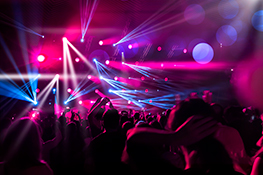
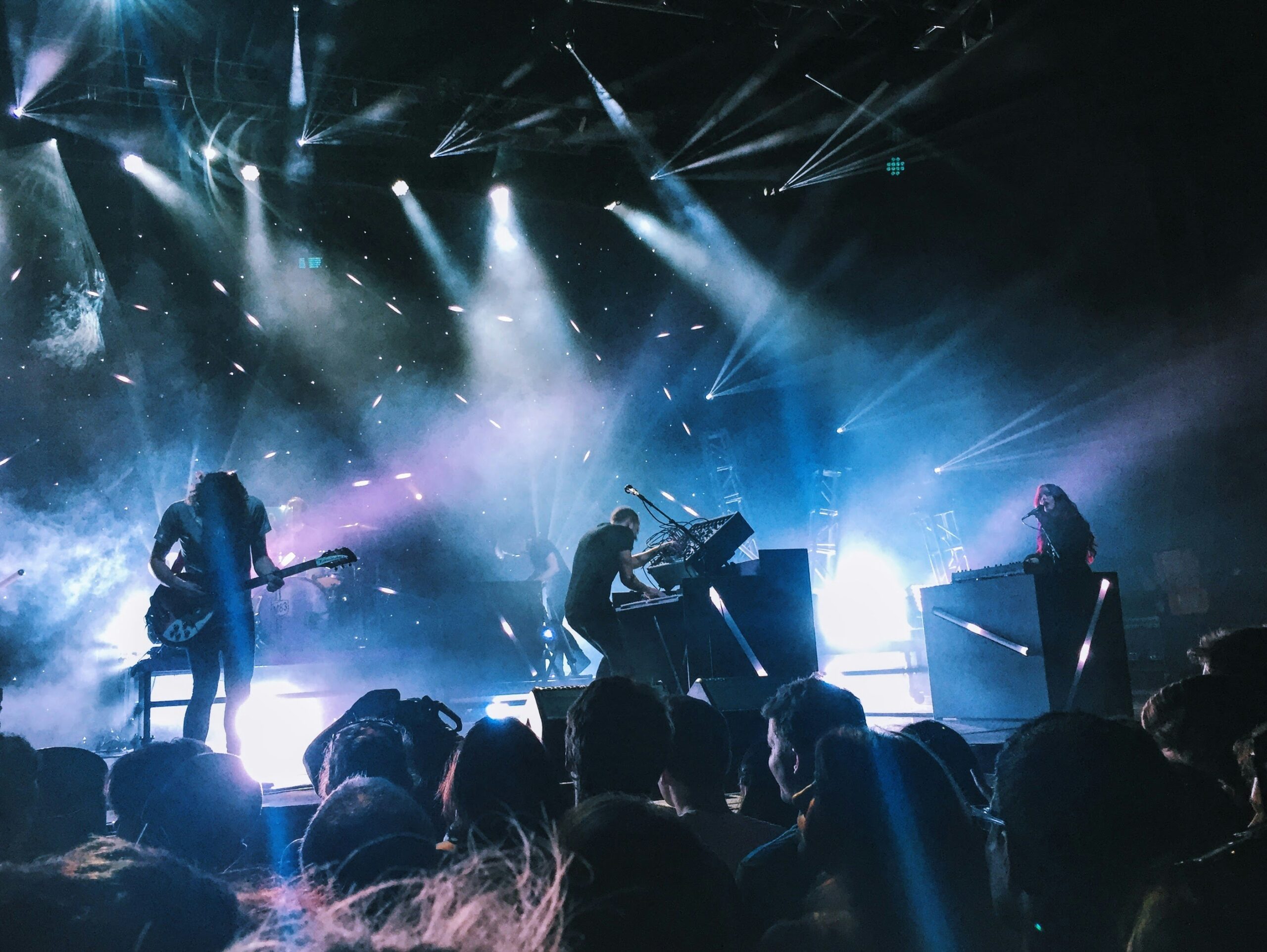
 Auditorium Construction Services
Auditorium Construction Services 